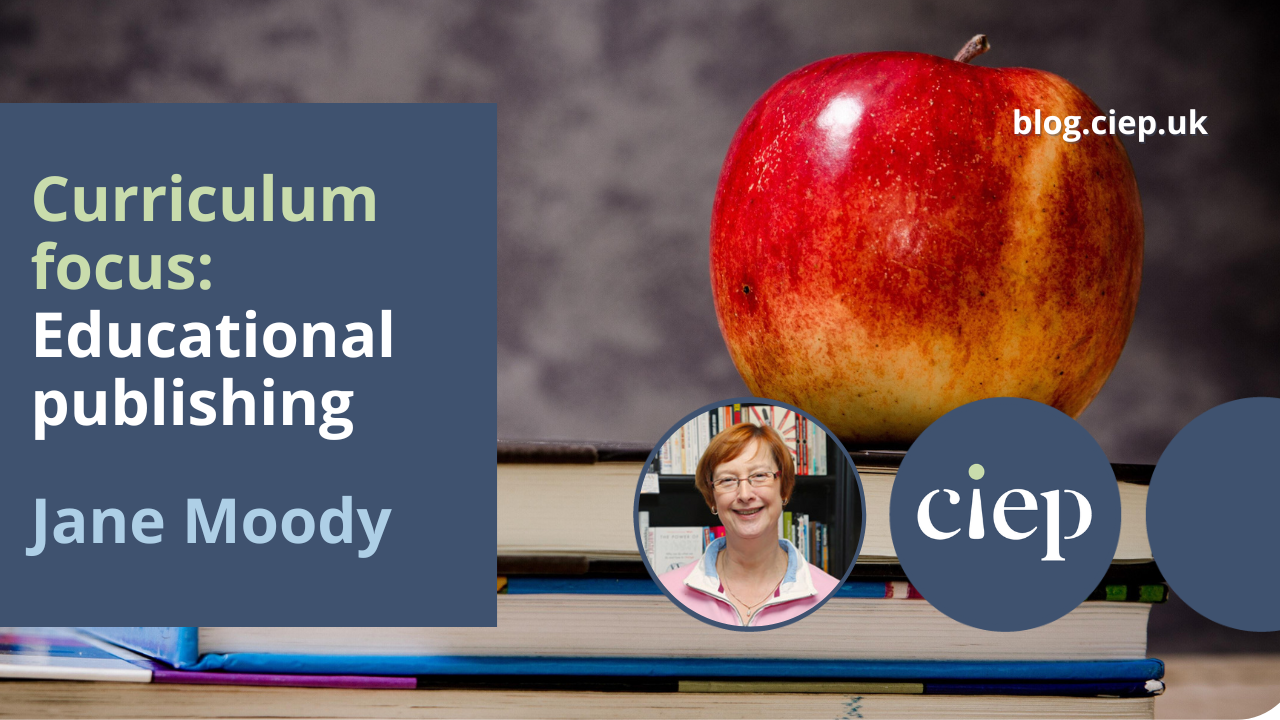In this regular feature for The Edit, former training director Jane Moody highlights areas of the CIEP’s Curriculum for professional development related to educational publishing.
Editors who work in educational publishing use all the same tools as every other kind of editor, so it is difficult to pick out anything specific. Often, however, the areas of scheduling and process are important to editors working in this field. Clarity is also particularly important in writing for educational purposes, so let’s look at these few aspects of the curriculum.
| Knowledge criteria | Editorial competency, professional skills and attitudes |
|---|---|
| 2.1.2 Schedules and budgeting | • Understands the importance of scheduling and budgeting within any publishing process • Understands the influence of the schedule/budget on the scope of editing/proofreading |
| 2.1.3 Editorial processes | • Understands the meaning and significance of common editorial terminology • Understands the roles and responsibilities of members of an editorial team • Understands the stages of the editorial process |
| 2.1.4 Production processes | • Understands the roles and responsibilities of a production team • Understands the meaning and use of common production terminology • Understands the stages of the production process (eg prepress, print/electronic production) |
| 2.3.3 Clarity in writing | • Understands the need to avoid ambiguity • Understands appropriate use of language and tone • Understands conciseness (elimination of redundancy/repetition) • If space is limited or layout is fixed, is aware of the need to fit any change into the available space without causing a new problem • Can reword appropriately to simplify, clarify or shorten text • Can identify whether material is well expressed and flows logically, with the ideas and wording easy to follow |
Resources to support your learning and CPD
The CIEP course Editorial Project Management would be really useful to enhance your skills. You could also try the PTC course Introduction to Digital Project Management. For clarity in writing, try the CIEP courses Getting to Grips with Grammar and Punctuation and Plain English for Editors. The CIEP guide Editing Textbooks would also be worth a read.
This book chapter would also be worth reading: Miha Kovač, Mojca K. Šebart. ‘Educational publishing: how it works: primary and secondary education publishing’ in: The Oxford Handbook of Publishing, edited by Angus Phillips and Michael Bhaskar. OUP, 2019, pp274–288.
If you work with interactive exercises, the CIEP course Editing Digital Content could prove useful.
Read Anneke Schmidt’s blog post: ‘What makes a good elearning course? elearning best practices explained’ (Skill & Care, 13 March 2023). This post could also lead you down various other useful rabbit holes.
The Society of Young Publishers has published the video ‘Introduction to Education Publishing’, which you can find on YouTube. It’s a panel discussion and gives a good overview of the education sector of the publishing industry.
This is only a snapshot – almost every other topic in domains 1 and 2 of the Curriculum for professional development are relevant to editing for educational publishing!
About Jane Moody
Jane has worked with books for all her working life (which is rather more years than she cares to admit), having started life as a librarian. She started a freelance editing business while at home with her two children, which she maintained for 15 years before going back into full-time employment as head of publishing for a medical Royal College.
Now retired, she has resurrected her editorial business, but has less time for work these days as she spends much time with her four grandchildren and in her garden.
 About the CIEP
About the CIEP
The Chartered Institute of Editing and Proofreading (CIEP) is a non-profit body promoting excellence in English language editing. We set and demonstrate editorial standards, and we are a community, training hub and support network for editorial professionals – the people who work to make text accurate, clear and fit for purpose.
Find out more about:
Photo credits: header image by Pixabay on Pexels.
Posted by Sue McLoughlin, blog assistant.
The views expressed here do not necessarily reflect those of the CIEP.


